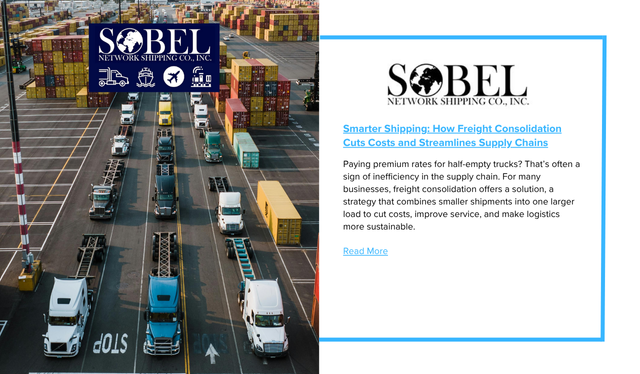Paying premium rates for half-empty trucks? That’s often a sign of inefficiency in the supply chain. For many businesses, freight consolidation offers a solution — a strategy that combines smaller shipments into one larger load to cut costs, improve service, and make logistics more sustainable.
What is Freight Consolidation?
Freight consolidation is the practice of pooling shipments from multiple shippers moving in the same direction into one container or truck. Instead of paying for unused space, companies share capacity, creating fuller loads that drive cost savings and operational efficiencies.
Two of the most common approaches include:
-
Less-than-Container Load (LCL): Multiple shippers share space in a single container, making it ideal for smaller, cost-sensitive shipments.
-
Full-Container Load (FCL): A single shipper uses the entire container, providing more control, faster transit, and fewer stops.
Why It Matters
With global supply chains under constant pressure, freight consolidation has become a critical tool for companies looking to:
-
Cut Transportation Costs: Fewer trips and fuller loads reduce per-unit shipping costs.
-
Improve Reliability: Consolidated shipments reduce handling, minimizing delays and damage.
-
Support Sustainability: Fewer trucks on the road lowers emissions and fuel consumption.
-
Optimize Supply Chains: More predictable delivery schedules support better planning and customer satisfaction.
The Benefits at a Glance
-
Profitability Boost: Lower freight costs increase margins.
-
Efficient Resource Use: Maximizes truck space, labor, and fuel.
-
Economies of Scale: Access to bulk rates by pooling shipments.
-
Customer Trust: Faster, more reliable deliveries strengthen relationships.
-
Reduced Risk: Fewer touchpoints minimize chances of damage or theft.
-
Visibility & Control: Easier tracking of one consolidated load.
-
Sustainability: Supports corporate environmental goals by lowering carbon footprints.
Challenges to Consider
While effective, freight consolidation is not without its hurdles:
-
Balancing Cost and Speed: Waiting to fill a container can delay delivery.
-
Complex Coordination: Multiple shippers and vendors require careful planning.
-
Liability Issues: Shared loads complicate insurance and claims.
-
Compliance Risks: International consolidated shipments face customs challenges.
Experts recommend proactive planning, clear contracts, and strong carrier partnerships to avoid these pitfalls.
The Process: From Planning to Delivery
-
Planning & Scheduling – Identify smaller loads and align timelines.
-
Carrier Contracting – Secure capacity and terms with reliable partners.
-
Cargo Collection – Gather shipments at a hub or distribution center.
-
Consolidation – Securely pack, label, and maximize container space.
-
Transportation – Move freight with full tracking visibility.
-
Deconsolidation & Final Delivery – Sort and deliver shipments to their destinations.
The Bottom Line
Freight consolidation is more than a cost-saving measure — it’s a strategy that enhances efficiency, reduces environmental impact, and creates competitive advantage. While it requires coordination and planning, businesses that adopt consolidation models consistently report stronger supply chains and improved customer satisfaction.
In an era of rising shipping costs and unpredictable trade policies, freight consolidation offers a clear path toward smarter, leaner, and more resilient logistics.


